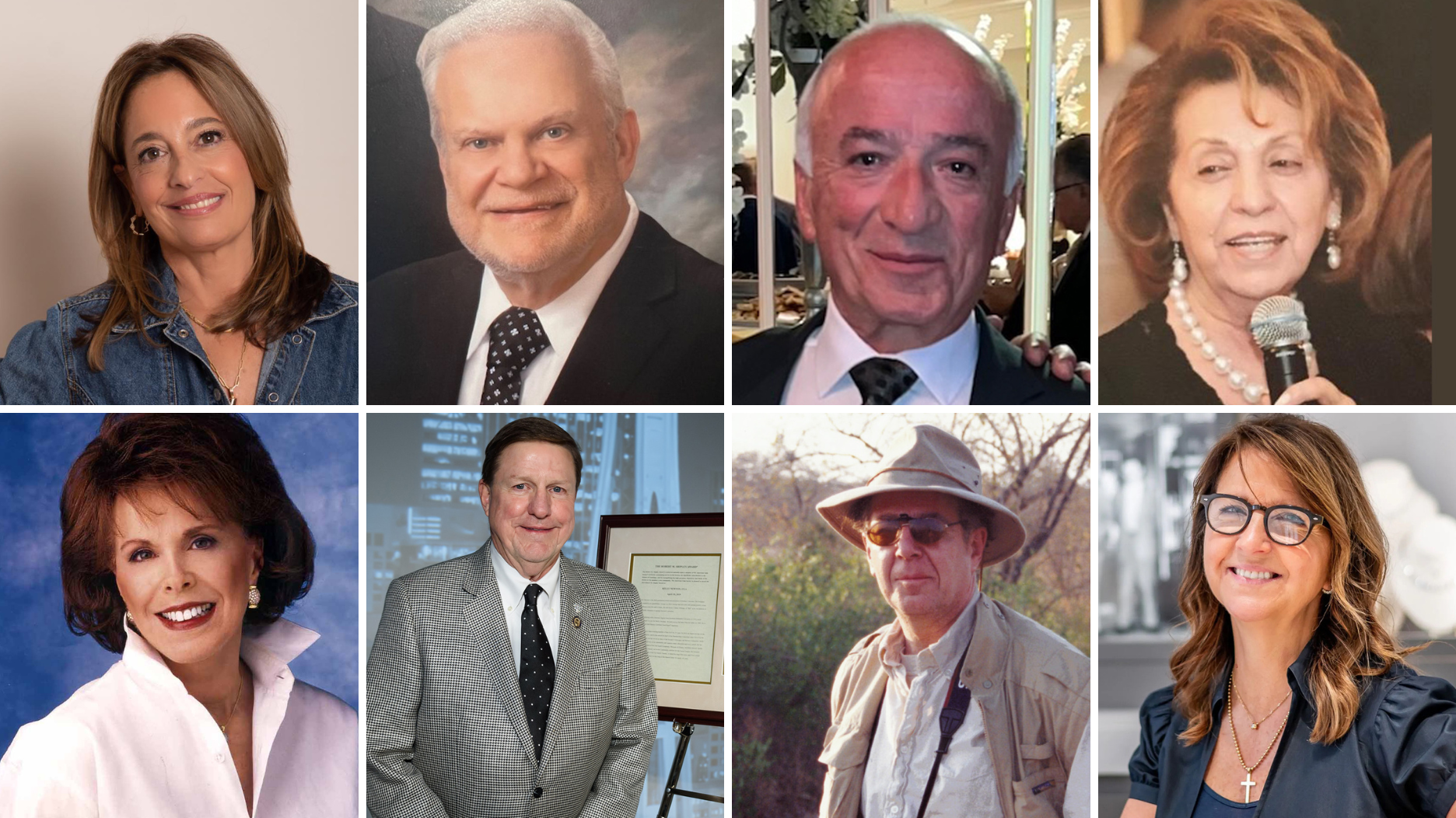Chris Blakeslee has experience at Athleta and Alo Yoga. Kendra Scott will remain on board as executive chair and chief visionary officer.
The Rebirth of Brother Wolf
How a pair of 26-year-old twins from Pittsburgh are reinventing a line of religious jewelry that, they say, has mass potential.

Pittsburgh--It’s a well-worn proverb that patience is a virtue.
But so are a strong work ethic and vision, both of which are possessed by the brother-and-sister team of Jonathan and Lauren Tesauro, who bought and essentially reinvented the Brother Wolf brand.
The Tesauro twins, who are now 26, grew up in the jewelry business. Their parents, Jack and Tina, have owned and operated Chapel Hills Jewelry in Aspinwall, Pennsylvania, a suburb of Pittsburgh, since 1989.
Their story will not sound unfamiliar to many other millennials who are now stepping in to take over their parents’ stores or manufacturing firms.
“As babies, Lauren and I crawled on the floor of all of our parents’ stores,” Jonathan said, noting that Chapel Hills Jewelry had three locations at one point.

Lauren was supposed to go medical school while her twin brother planned to attend law school.
But, a family medical emergency--their mother had a brain aneurysm--in 2013 meant they had to change course. They both canceled their plans for post-college education in order to help their father with the family business while their mother recovered.
“When family business calls,” Jonathan said, “you jump and go.”
While working at Chapel Hills Jewelry, the twins, who were searching for a career path outside of retail, took notice of one line that was a consistently strong performer, and one that both they and their mother believed in--Brother Wolf.
Then owned by a Connecticut woman who wishes to remain anonymous, Brother Wolf was a relatively narrowly distributed line of Catholic-centric religious relics reproduced as pendants, but the Tesauros saw potential for so much more.
Jonathan said they wanted to give the line broader appeal, to expand beyond Catholicism to encompass other religions, and also go beyond specific faith to include pieces that are spiritual in nature but not tied to any one religion. They also wanted to make the line more fashionable.
In 2014, the Tesauros bought the company and spent the next year and a half turning Brother Wolf into a brand: “We always say, ‘We didn’t buy a company,
They began having the dealers, who had been sourcing relics for Brother Wolf for years, broaden their searches.
Located in places like Barcelona, Prague and Israel, these dealers comb churches, temples and antique shops in search of old pins, coins and pendants; they know, the Tesauros said, what type of relics work for the brand.
Once the relics are brought back into the United States, a mold is made of it. It is this first-generation mold that is used to the make the pendants, which are then put on a sterling silver chains, sometimes with 14-karat gold touches and pearl drops.
“We always put that Brother Wolf touch on everything,” Lauren says.
The Tesauros also had proper photography done (high-resolution images, white background) and opened up social media accounts.
By mid-2015, they began opening doors. Today, they have 60 accounts and just added a national sales manager, Tom Byelick. Both Jonathan and Lauren said while there is no ceiling to the number of stores they will open, they will not oversaturate any single market.
When asked about selling online direct to consumers, Lauren answered with a quick no, adding that, “We’re really trying to steer away from that out of respect for our retailers.”
The Tesauros also just moved Brother Wolf’s operations from an 800-square-foot space to a 3,200-square-foot space in Pittsburgh. It is here, in the former Steel City that is expanding rapidly just like the Brother Wolf brand, that all the jewelry is made.
It is also here that the Tesauros trace the history of the relic and assign it a virtue.
Take, for example, one of Jonathan’s favorite pieces, St. Teresa of Ávila (1515-1582), the patron saint of Spain who was a mystic and one of only a few women elevated to the status of Doctor of the Church, a title bestowed on saints of particular importance. Her virtue is charisma.
There’s also St. Cecelia, the patron saint of musicians and poets who is pictured in the relic used for the pendant with her harp. Her assigned virtue is creativity.
And it is in these virtues that lies the strength of Brother Wolf, and the reason Jonathan and Lauren saw so much potential in the line.
Each piece has a great story behind it that people can connect with, whether they want to wear the pendants as an amulet of protection, a nod to their profession or in memory of a loved one.
And that is one of, if not the, single most important elements of selling jewelry--eliciting genuine emotion.
“We always say, ‘A jewelry store is like a bar, you always hear everybody’s story,’” Jonathan said. “Wait until you have Brother Wolf in your store; you’re really going to get to know that person.”
The Latest

The credit card companies’ surveys examined where consumers shopped, what they bought, and what they valued this holiday season.

Kimberly Miller has been promoted to the role.

How Jewelers of America’s 20 Under 40 are leading to ensure a brighter future for the jewelry industry.

The “Serenity” charm set with 13 opals is a modern amulet offering protection, guidance, and intention, the brand said.


“Bridgerton” actresses Hannah Dodd and Claudia Jessie star in the brand’s “Rules to Love By” campaign.

Founded by jeweler and sculptor Ana Khouri, the brand is “expanding the boundaries of what high jewelry can be.”

Roseco’s 704-page catalog showcases new lab-grown diamonds, findings, tools & more—available in print or interactive digital editions.

The jewelry manufacturer and supplier is going with a fiery shade it says symbolizes power and transformation.

The singer-songwriter will make her debut as the French luxury brand’s new ambassador in a campaign for its “Coco Crush” jewelry line.

The nonprofit’s new president and CEO, Annie Doresca, also began her role this month.

As the shopping mall model evolves and online retail grows, Smith shares his predictions for the future of physical stores.

The trade show is slated for Jan. 31-Feb. 2 at The Lighthouse in New York City's Chelsea neighborhood.

January’s birthstone comes in a rainbow of colors, from the traditional red to orange, purple, and green.

The annual report highlights how it supported communities in areas where natural diamonds are mined, crafted, and sold.

Footage of a fight breaking out in the NYC Diamond District was viewed millions of times on Instagram and Facebook.

The supplier has a curated list of must-have tools for jewelers doing in-house custom work this year.

The Signet Jewelers-owned store, which turned 100 last year, calls its new concept stores “The Edit.”

Linda Coutu is rejoining the precious metals provider as its director of sales.

The governing board welcomed two new members, Claire Scragg and Susan Eisen.

Sparkle with festive diamond jewelry as we celebrate the beginning of 2026.

In its annual report, Pinterest noted an increase in searches for brooches, heirloom jewelry, and ‘80s luxury.

Executive Chairman Richard Baker will take over the role as rumors swirl that a bankruptcy filing is imminent for the troubled retailer.

Mohr had just retired in June after more than two decades as Couture’s retailer liaison.

Shekhar Shah of Real Gems Inc. will serve as president of the Indian Diamond & Colorstone Association in 2026.

This year’s good luck charm features the mythical horse Pegasus, and is our first Piece of the Week of the new year.

Articles about crime, engagement rings, and a necklace worn in the World Series generated the most interest among readers.
































